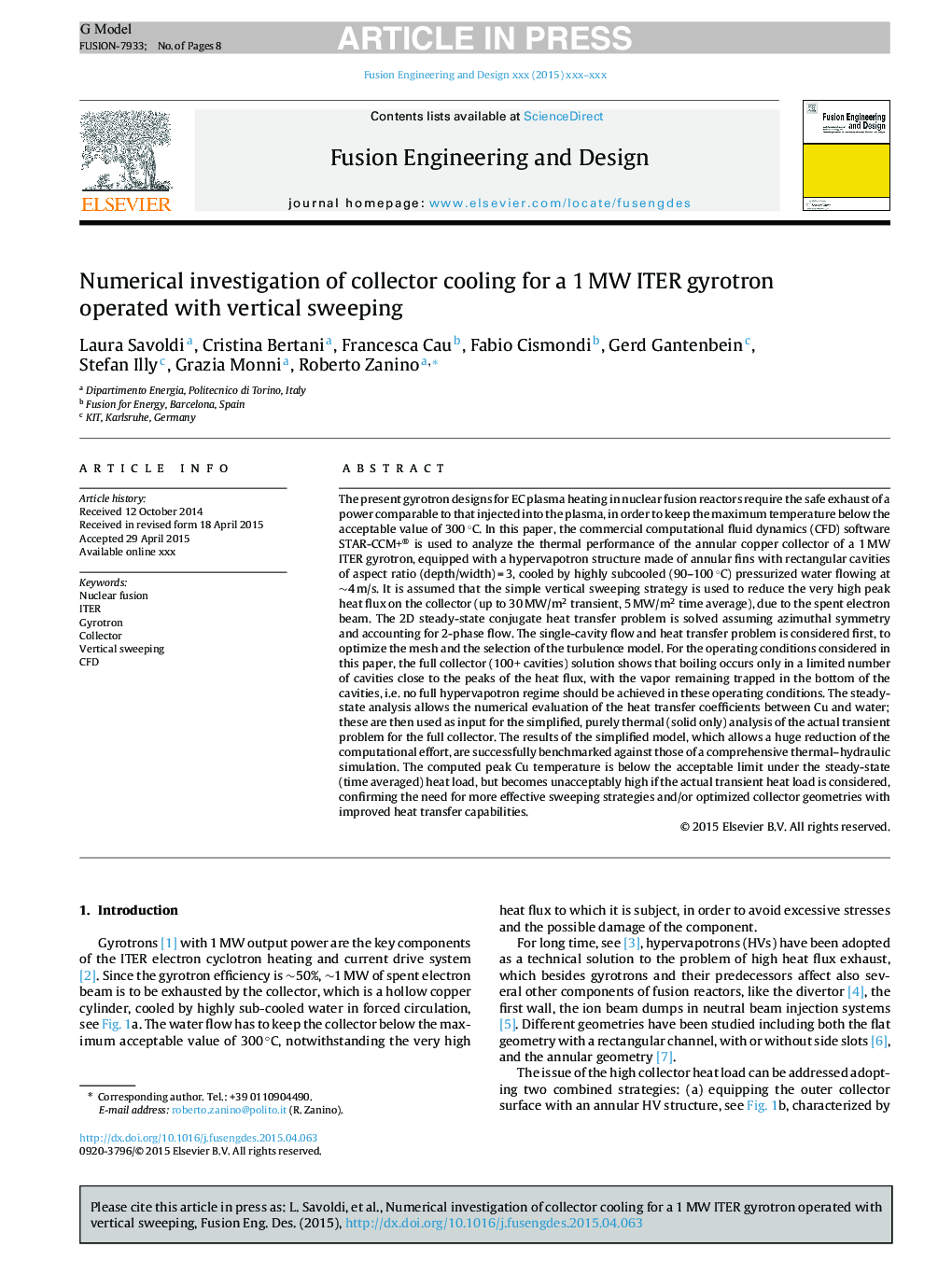| Article ID | Journal | Published Year | Pages | File Type |
|---|---|---|---|---|
| 6745517 | Fusion Engineering and Design | 2015 | 8 Pages |
Abstract
The present gyrotron designs for EC plasma heating in nuclear fusion reactors require the safe exhaust of a power comparable to that injected into the plasma, in order to keep the maximum temperature below the acceptable value of 300 °C. In this paper, the commercial computational fluid dynamics (CFD) software STAR-CCM+® is used to analyze the thermal performance of the annular copper collector of a 1 MW ITER gyrotron, equipped with a hypervapotron structure made of annular fins with rectangular cavities of aspect ratio (depth/width) = 3, cooled by highly subcooled (90-100 °C) pressurized water flowing at â¼4 m/s. It is assumed that the simple vertical sweeping strategy is used to reduce the very high peak heat flux on the collector (up to 30 MW/m2 transient, 5 MW/m2 time average), due to the spent electron beam. The 2D steady-state conjugate heat transfer problem is solved assuming azimuthal symmetry and accounting for 2-phase flow. The single-cavity flow and heat transfer problem is considered first, to optimize the mesh and the selection of the turbulence model. For the operating conditions considered in this paper, the full collector (100+ cavities) solution shows that boiling occurs only in a limited number of cavities close to the peaks of the heat flux, with the vapor remaining trapped in the bottom of the cavities, i.e. no full hypervapotron regime should be achieved in these operating conditions. The steady-state analysis allows the numerical evaluation of the heat transfer coefficients between Cu and water; these are then used as input for the simplified, purely thermal (solid only) analysis of the actual transient problem for the full collector. The results of the simplified model, which allows a huge reduction of the computational effort, are successfully benchmarked against those of a comprehensive thermal-hydraulic simulation. The computed peak Cu temperature is below the acceptable limit under the steady-state (time averaged) heat load, but becomes unacceptably high if the actual transient heat load is considered, confirming the need for more effective sweeping strategies and/or optimized collector geometries with improved heat transfer capabilities.
Related Topics
Physical Sciences and Engineering
Energy
Energy Engineering and Power Technology
Authors
Laura Savoldi, Cristina Bertani, Francesca Cau, Fabio Cismondi, Gerd Gantenbein, Stefan Illy, Grazia Monni, Roberto Zanino,
